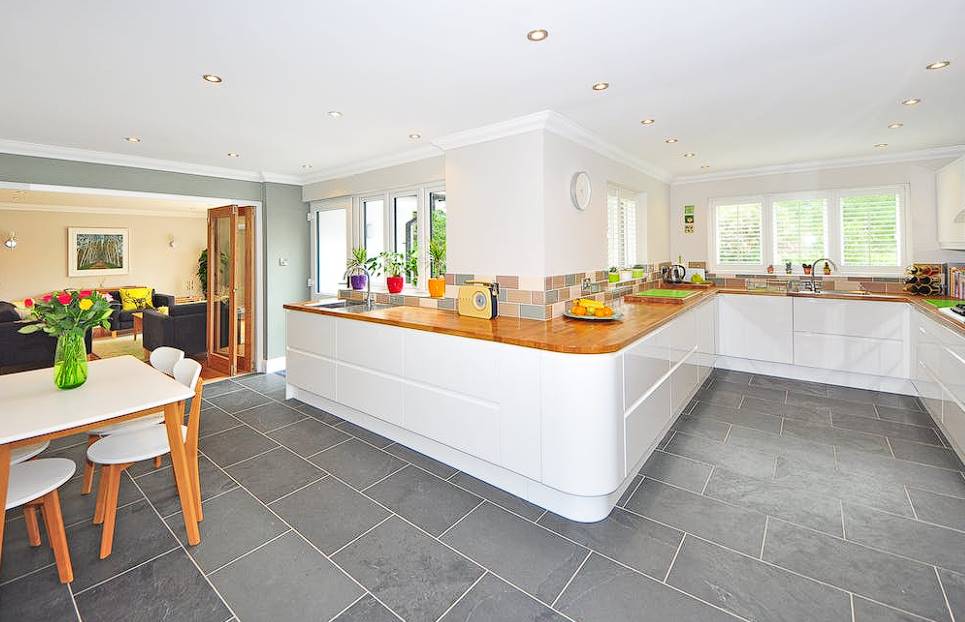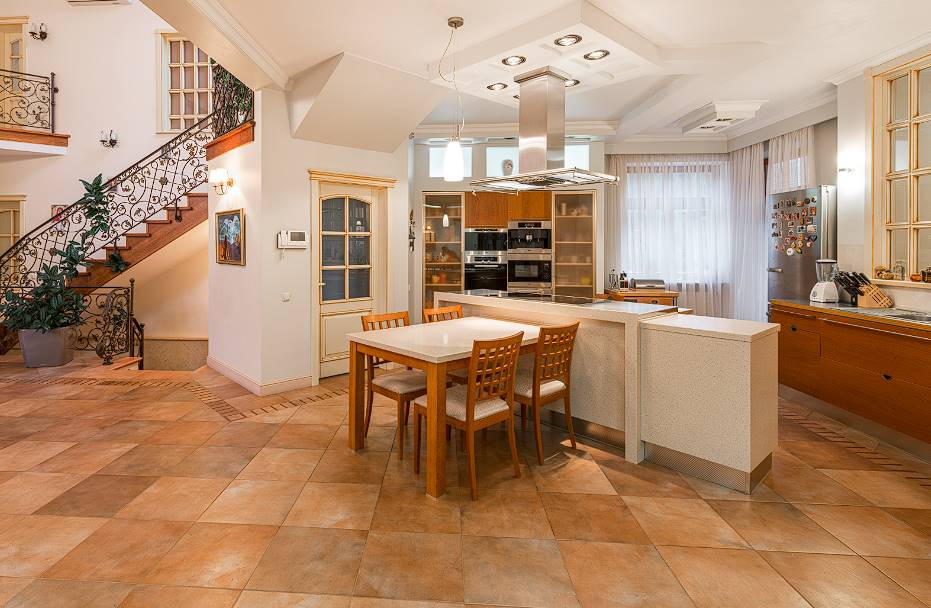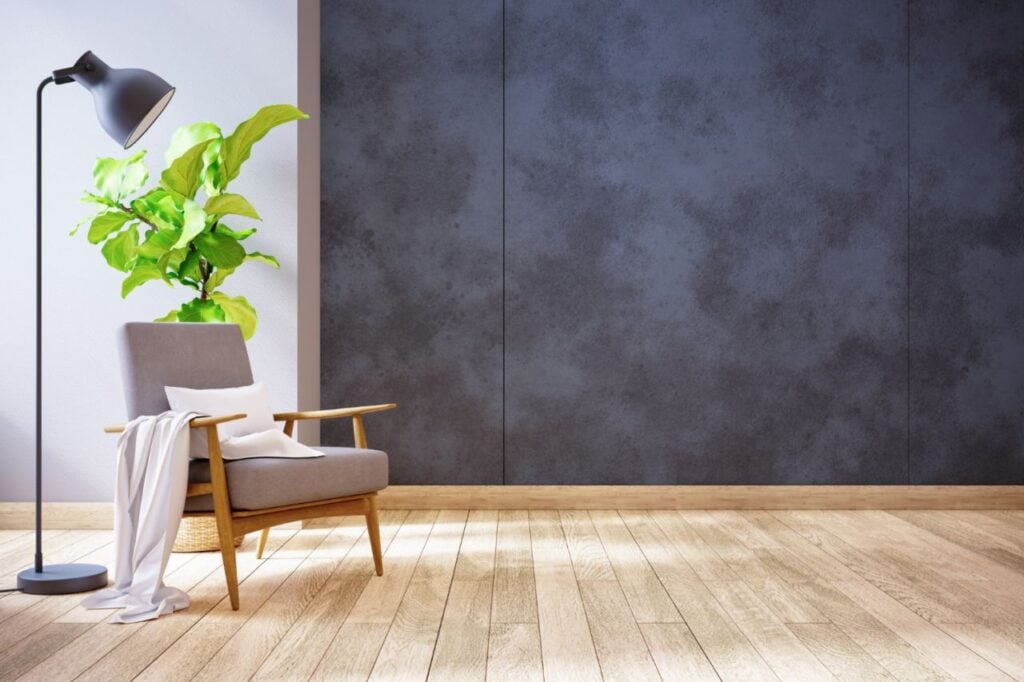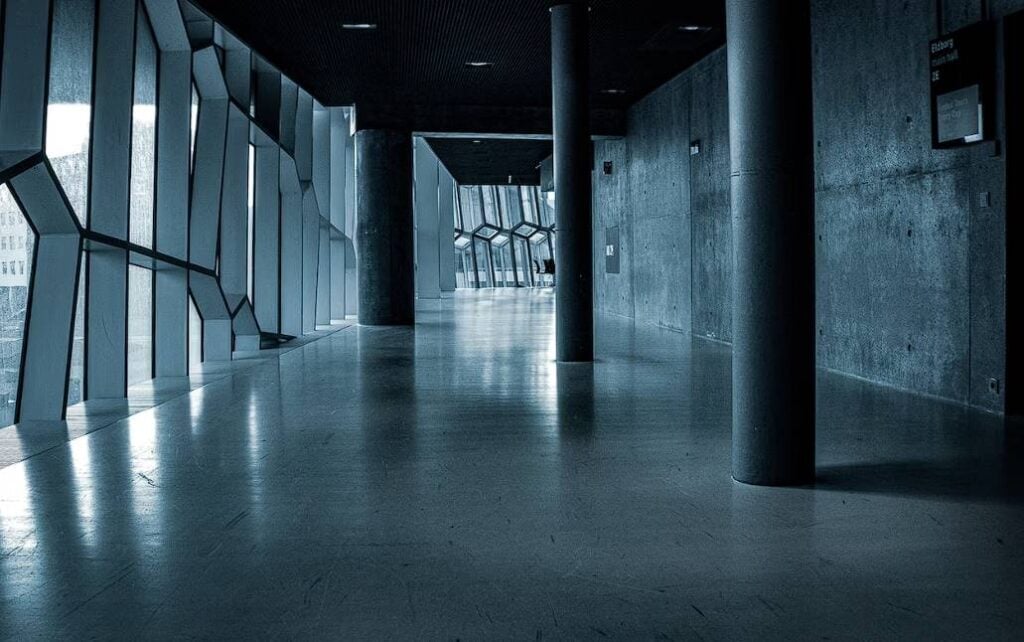Do you feel weary of seeing your outdated tile floor yet need more time, budget, or motivation to undertake a complete replacement? Well, fret not because there exists an alternative solution! Applying a fresh coat of paint allows you to breathe new life into those tired tiles and give your room a completely rejuvenated appearance.
The process is surprisingly simple, requiring just a few basic supplies and a free weekend to dedicate to this transformative project. Whether it's your laundry room, bathroom, or any other area in your home plagued by old or grimy tiles, you can revamp the space without breaking the bank or investing in specialised equipment.
With this approach, you have the power to achieve a remarkable transformation that not only saves you money but also eliminates the need for extensive renovations. Instead, embrace the opportunity to unleash your creativity and infuse your living space with a fresh and revitalised ambience while enjoying the satisfaction of a budget-friendly and DIY endeavour.
Painting a Ceramic Tile Floor
Painting tiles is a well-known undertaking for many people. In the past, individuals have taken on the project of painting tiles in their kitchens to create an affordable backsplash. Similarly, some experimented with small-scale tile floor projects during that time.
However, through accumulated experience and receiving valuable guidance from professional painters, individuals have developed the necessary skills to execute the process accurately and effectively.
Here's How to Paint a Tile Floor:
Clean your tiled floor.
Before starting any work, wear rubber gloves and thoroughly clean your ceramic tiled floor. Selley's Sugar Soap wipes are highly recommended for this task, but if you have a larger area to clean, you prefer to use their concentrate, warm water, and a bucket. Remember also to give your grout lines a thorough scrub; an old toothbrush can work wonders. Finally, spray some mould killer on the affected areas and let it sit for two to three minutes before proceeding.
It's important to prioritize your safety, so wear a respirator while working with the mould killer, as it can be harmful. Afterwards, rinse your bathroom floor with water to remove any residue.
Sand the Tile
Gently sand the tile using 220 grit sandpaper. It's important to clean and dry the area again to ensure all the sanding residue is thoroughly removed.
Use Painters Tape
Use painter's tape to carefully cover and protect nearby rooms, fixtures, or cabinets. This will prevent accidental splashes or unintended contact with your roller, ensuring that these areas remain unaffected during the painting process.
Apply Your Primer
Applying a primer is an essential step in ensuring proper paint adhesion to the tiles' surface, preventing future chipping or marking. Begin by opening the primer tin and locating the attached additive tube. Next, add the contents of the tube to the primer and stir the mixture for 2-5 minutes.
Transfer the primer to a paint tray and use a combination of a paintbrush and roller to apply it to the tiles. Use the paintbrush to carefully apply primer along the grout lines, while the foam roller can achieve an even coverage over the entire surface. It's important to maintain good ventilation during the painting process by opening windows and doors or utilising the bathroom exhaust fan.
Paint Your Tiles
Just like with the primer, add the additive to your paint tin and stir the mixture for 2-5 minutes. Next, pour the coloured paint into a separate tray and use a paintbrush and roller to apply the first coat of paint to the tiles. Again, remember to explore the endless options available when choosing your colour.
After applying two coats of paint, finish using a clean and fresh paint roller to roll over the painted surface one final time. This will ensure a nice and even finish to complete your project.
Get Creative and Finish Up
If you desire to embellish the painted tile with stencils or hand-painted decorations, now is the time. But first, allow sufficient drying time before walking on the surface or returning furniture to the area.
Painting Tile Floor Pros and Cons
Even the toughest tiles on the bathroom floor will eventually exhibit signs of wear and tear, such as chips and a dulling of the surface. Tile replacement is time-consuming and difficult, and it may cost a lot of money. In light of these considerations, keeping and repainting the old tiles is a viable solution that saves money and requires less work.
There are a number of benefits to painting tile floors rather than replacing them, including the ability to save money on labour by doing the work yourself, a lower overall cost compared to retiling, and more design flexibility. Tile painting does have certain drawbacks, too, so keep that in mind. For instance, it is not a long-term option for tile restoration and will temporarily make the shower useless.
What Are The Benefits Of Painting A Tile Floor?
Tile flooring is popular among homeowners due to its ease of cleaning and durability compared to other types of flooring. However, over time, you may encounter issues or desire a change in your space, leading you to consider alternative options for your flooring.
Painting a tile floor provides a viable solution with several advantages for those looking to modify their living space.
Cost-effective
If you're looking to give your floor a facelift on a tight budget, consider painting it yourself to save on labour charges. The final price tag is totally up to you, as you get to choose the tools and materials that best suit your needs and budget.
It Updates The Floor
Change is an inevitable part of life, and it's common for individuals to desire updates in their living spaces. If you find that your old tile floor is no longer visually appealing, painting it in a different colour can bring a refreshing change to the floor and the entire room. Additionally, if you have recently moved into a house with tile flooring that doesn't align with your preferences, painting the tiles offers a great opportunity to transform the space according to your style and taste.
Versatile
By painting your tiles, you can experiment with various colours and patterns, achieving the desired look for your floor. The versatility of paint enables you to create a unique and customized design that suits your style and preferences. Another advantage is the flexibility to repaint whenever you want, allowing you to change the pattern or colour scheme whenever you desire a new look.
It's important to consider the impact of colour on the perception of space, especially in smaller bathrooms. For example, bright and bold shades can create an illusion of a more open and spacious environment, while darker shades may make the space more confined. Keeping this in mind, you can choose colours that complement the size and layout of your area to enhance its overall appearance.
It's A Quick Fix
Over time, older floor tiles, particularly light-coloured ones, can develop a worn and dirty appearance that is challenging to remove despite diligent cleaning efforts. In addition, stains may persist, making it difficult to restore the original pristine look of the tiles. In such cases, painting the tiles provides a simple and effective solution to conceal these imperfections.
By applying paint to the tiles, you can easily hide light scratches, chips, and minor cracks that may have accumulated over time. The paint acts as a protective layer, covering up these blemishes and giving the tiles a refreshed and renewed appearance. This allows you to transform the look of your floor without the need for extensive repairs or replacement.
Additionally, painting your floor tiles allows you to choose a colour that complements your desired aesthetic and conceals imperfections. It's a cost-effective and efficient way to enhance the overall appearance of your flooring and create a cleaner and more appealing space.
Minimal Maintenance
It doesn't take much extra work on top of your regular cleaning regimen to keep a painted floor looking like new. Cleaning the painted surface is the same as cleaning any other floor, so just sweep, vacuum, or mop as usual.
Putting down mats and rugs in high-traffic areas will help your freshly painted floor last longer. By properly positioning these covers, you can reduce the risk of scratching or otherwise damaging the freshly painted surface. Mats and rugs also serve as a barrier, protecting floors from wear and tear caused by shoes and other high traffic.
You may keep your painted floor in good condition for a longer time by using mats and rugs on it. Cleaning these covers on a regular basis will also help keep the painted floor looking good.
You Can Be Creative
In addition to its cost-effectiveness, painting floor tile allows you to express your personality through the chosen design pattern.
When it comes to painting tile floors, there are various approaches you can take. It doesn't have to be limited to a single, plain colour. If you desire some visual diversity in the design, stencils can be utilised to incorporate patterns and add an extra dimension to the painted floor. This allows for more customisation and creativity in transforming the appearance of your tile flooring.
Tile Paint Disadvantages
While there are several advantages to painting floor tiles, it's important to consider the potential drawbacks as well. Here are a few disadvantages to keep in mind.
The Nature of Paint on Floor Tiles
In the realm of floor renovations, the act of painting tiles presents a somewhat fleeting solution. Unfortunately, the longevity of painted tile floors remains uncertain due to the potential for peeling and scratching, particularly in areas subjected to heavy foot traffic. This delicate balance between aesthetics and durability warrants further examination.
Unleashing the Factors Behind Floor Damage
When it comes to continuous flooring, a plethora of factors conspire to contribute to its eventual demise. Exposure to various elements and the constant wear and tear inflicted by daily use all play a significant role in the erosion of painted tile floors. The interplay between these forces forms a complex web that challenges the endurance of your revamped surfaces.
The Bathroom's Downtime Dilemma
Venturing into the realm of bathroom renovations, the decision to paint the floor involves a considerable commitment of time. The duration required for this endeavour depends on an array of factors, from personal work speed to the intricacies of the chosen pattern and design. Additionally, the drying time of the primer, sealant, and paint must also be taken into account. The resulting timeline can span anywhere from a swift weekend project to a protracted endeavour lasting a week or even longer, disrupting the functionality of your bathroom.
The Thorny Issue of Maintenance
The initial delight of witnessing the transformation of your floor tiles through the power of paint may eventually wane over time. This is particularly true for those who opt for a solid colour, as the unforgiving nature of such floors reveals every speck of dirt and blemish with unforgiving clarity. To preserve the pristine appearance, one must exercise caution, abstaining from dragging furniture or other objects across the painted surface, as such actions have the potential to leave indelible marks and mar the finish.
A Pragmatic Perspective
While the vast majority of tiles lend themselves to the possibility of a fresh coat of paint, it is crucial to note that glazed quarry tiles defy such endeavours. Their inherent resistance to adhesion makes them unsuitable candidates for this particular makeover. Moreover, the level of moisture in the environment and the presence of splashes or backsplashes must be taken into account, as these variables can significantly impact the longevity of your painted tiles. In light of these considerations, one must embrace the reality that regular reapplications and touch-ups will become an integral part of the maintenance routine required to preserve the desired appearance.
Conclusion
Painting a tile floor is a weekend project that requires only a few inexpensive supplies and some time. Sanding the tile using 220 grit sandpaper, covering and protecting adjacent rooms, fixtures, or cabinets with painter's tape, and cleaning the tile floor with Selley's Sugar Soap wipes, warm water, and a bucket. This method has the potential to reduce costs and the need for costly repairs or alterations. Important information in this article includes directions for painting a tile floor. Painting tiles requires sufficient ventilation and the use of primers to ensure that the paint will stick to the surface.
Use a paintbrush and roller to cover the tiles, and then use stencils or freehand to add some flair. You can save money on work by painting tile floors instead of replacing them, and you'll spend less overall compared to the cost of retiling. However, this is not a permanent solution for tile restoration and will render the shower inoperable for the time being. If you want to make some changes to your home, painting your tile floor is a great option. It's a cheap and easy way to revitalise a tired floor, add new design options, and replace stained or damaged tiles.
Additionally, it may tailor a layout specifically to your tastes and interests. When designing a small bathroom, it is especially crucial to think about how colour will affect the sense of space and to pick tones that would work well together. Painted tile floors erode for a variety of reasons, including exposure to the elements and the wear and strain caused by regular use. When painting the floor, keep in mind the maintenance issue and the downtime problem that plagues the bathroom. Because of their resistance to adhesion and ambient moisture, glazed quarry tiles defy such efforts. To keep the intended appearance, periodic reapplication and touch-ups must become a standard component of upkeep.
Content Summary
- Painting tile floors can provide a cost-effective alternative to replacing them.
- The process of painting a tile floor is simple and requires basic supplies.
- It allows you to rejuvenate the appearance of your room without extensive renovations.
- Cleaning the tiled floor thoroughly before painting is essential.
- Sanding the tile helps prepare the surface for better paint adhesion.
- Using painter's tape protects surrounding areas from accidental paint splashes.
- Applying a primer is crucial to ensure proper paint adhesion and prevent future chipping.
- Painting the tiles with multiple coats and using a roller provides an even finish.
- Adding stencils or decorations to the painted tiles allows for creativity.
- Allowing sufficient drying time before using the surface is important.
- Painting tile floors is a cost-effective solution that saves money on labour.
- It offers design flexibility and the opportunity to update the floor's appearance.
- Painted tiles can be versatile, with various colours and patterns to choose from.
- It helps hide imperfections, scratches, and minor cracks on the tiles.
- Minimal maintenance is required for painted tile floors.
- Mats and rugs can protect the painted surface from wear and tear.
- Painting the floor allows for personal expression and customisation.
- The longevity of painted tile floors is uncertain due to potential peeling and scratching.
- Factors like exposure to elements and daily wear contribute to the erosion of painted tiles.
- Painting the bathroom floor can require a significant time commitment.
- Maintenance is necessary to preserve the pristine appearance of solid-coloured floors.
- Glazed quarry tiles are unsuitable for painting due to adhesion issues.
- Moisture levels and splashes can impact the longevity of painted tiles.
- Regular reapplications and touch-ups are necessary to maintain the desired appearance.
- Painting tile floors is a viable solution for those seeking a budget-friendly option.
- It provides an opportunity to update the look of your flooring without extensive work.
- Choosing the right colour can enhance the perception of space in smaller bathrooms.
- Painted floors offer a quick fix for worn and dirty tiles that are difficult to clean.
- Painting allows for customisation and the incorporation of patterns and stencils.
- While there are drawbacks, considering the advantages and disadvantages is important when deciding to paint tile floors.
Frequently Asked Questions
Absolutely! There are many reasons why people opt to paint tiles. First, it's a cost-effective upgrade. Painting tiles can spruce up your space and extend the life of tiles in high-traffic areas like floors, kitchens, and bathrooms.
The short answer is that painting floor tile lasts, even with excessive floor traffic! However, there are some issues to consider! Overall, the painted floor tile looks good when standing and looking at the room, and you can't see any major problems.
A painted tile does not have the surface strength of a standard glazed tile, so when cleaning, use non-abrasive liquid cleaners such as washing up liquid in warm water and a soft cloth or a sponge.
Painting tile is a faster, cheaper, and significantly cleaner alternative to full tile replacement. While painted tile will never last as long as new tile, it's a project that can extend the life of the tile and restore it to an almost-new appearance.
Yes, you can paint tile grout. However, doing so may require multiple coats as the grout will soak up much of the paint. Using a primer should eliminate many problems, so it is highly recommended.







